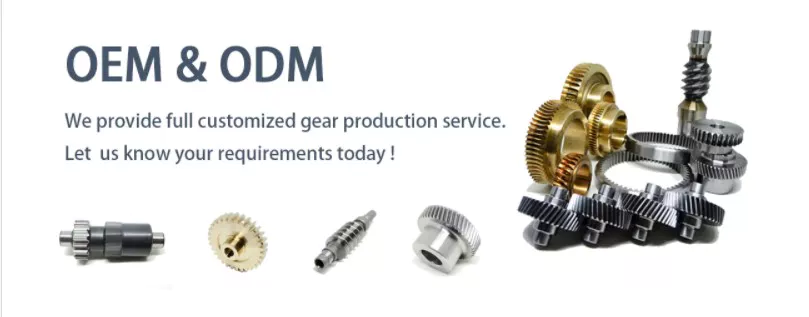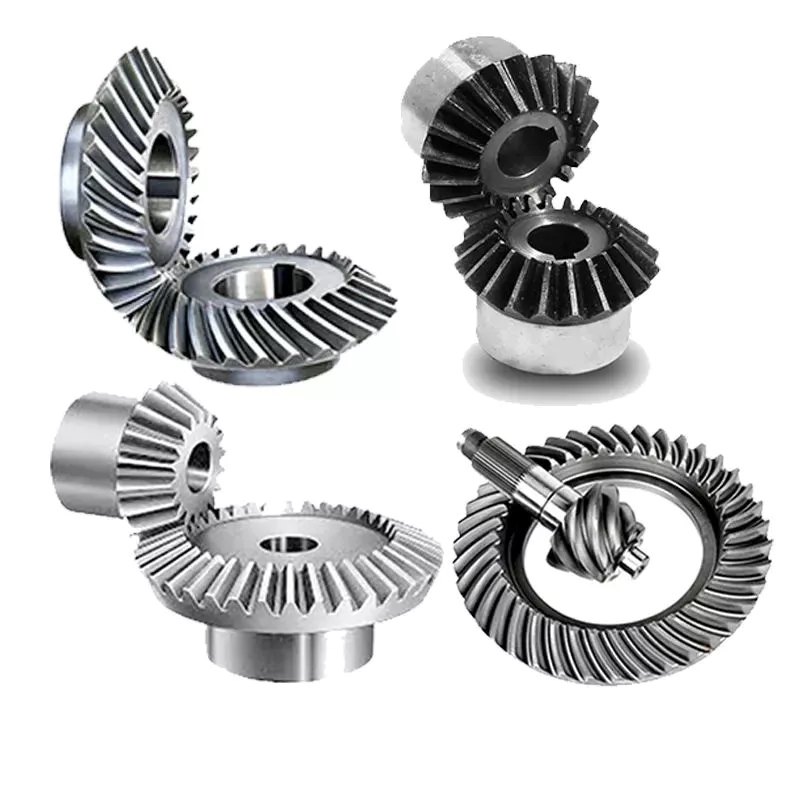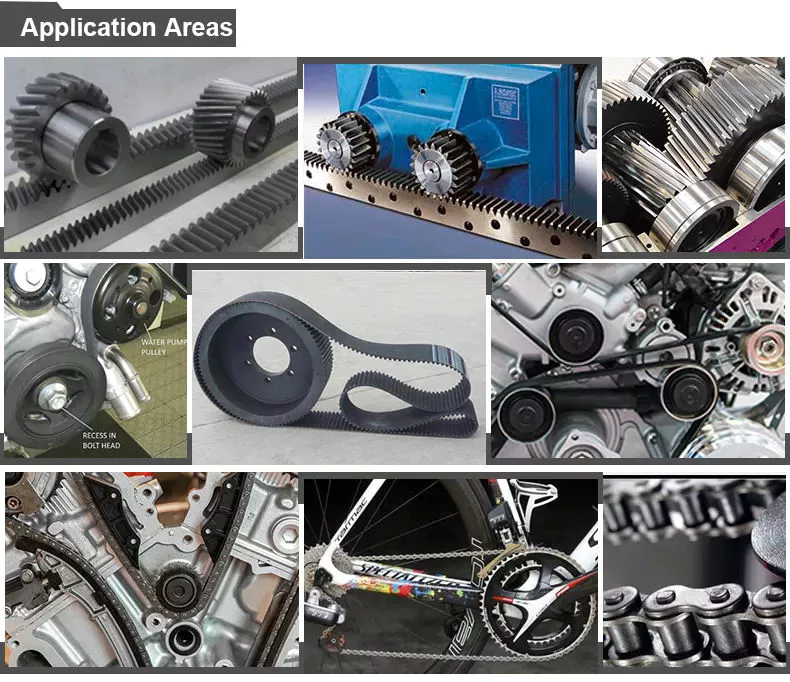Model Number: PL90
Gearing Arrangement: Planetary
Output Torque: 9-1000N.m
Rated Power: 200W-5000W
Input Speed: 200-3000rpm
Output Speed: 3.9-1000rpm
Ratio: 3~512
Material: Aluminum alloy
Average lifetime: 20000h
Weight: 0.9kg-10kg
match with motor: servor motor
Warranty: 1 year
Packaging Details: Safety Packing Method: 1.Plastic bags with Chemical Desiccant. 2.Individual Carton packaging. 3.Wooden Box outside.
Port: HangZhou/ZheJiang Port
Specification
| Type: | Planetary gearbox |
| Model: | 60.80.90.115.120.142.160 |
| Ratio: | 1-stage: 3.4.5.7.8.10 2-stage: 9.10.12.15.16.20.25.30.32.35.40.50.64.70.100 3-stage: 60.80.100.120.160.200.256.320.512 |
| Color: | Black/Silver or on customer request |
| Housing | Aluminum alloy |
| Packing | Carton/Wooden case |
| Warranty: | 1 Year |
| Usages: | Industrial Machine: Food Stuff, Ceramics ,CHEMICAL, Packing ,Dyeing ,Wooding working ,Glass |
Packaging & High power 380V 10kw motor reduction worm gearbox gear motor for package machine Shipping
Our Services
(1) With excellent quality
(2) Reasonable price(3) Promise to delivery on time(4) Large output torque(5) Safe, reliable, economical and durable(6) Stable transmission, quiet operation(7) High heat-radiating efficiency, high carrying ability(8) Certificate of quality: ISO9001:2008(9) Every product must be tested before sending(10)Made of high-quality aluminum alloy, light weight and non-rusting(11)Large output torque.(12) Smooth running and low noise.(13) High radiating efficiency.(14) Good-looking appearance, durable service life and small volume.(15) Suitable for Omni bearing installation.
Company Information
HangZhou Wanxing Reducer Co., High performance Oil tank Air breather filter GearboxReducer breathable vent plug Ltd is specialized in R&D,manufacture and sales of transmissions. By taking the aim of “quality first and credit first”, we always strive for survival on the basis of quality and credit and strive for development on the basis of technology since our company was built as well as is the first to pass ISO9001:2000 International Quality System Certificate.
FAQ
1. Q: What’s type of your company.
A: We are manufacturer.
2. Q: what should I provide when I choose gearbox/speed reducer?
A: 1) load condition
2) speed of rotation or speed ratio(combination with combine speed reducer can get extra low out putting rotational speed)
3) work circumstance(temperature, humidty, High precision 200 Hollow Shaft Rotating Actuator 10 ratio rotary table match nema 34 stepper motor hollow actuator corrosion etc.)
4) space of installation
3. Q: How long dose it take to finish my order?
A: It depends on your quantity. Generally 25days for 1 20GP, 35days for 1 40HQ.
4. Q: How can i know the process of my order?
A: Detailed picture of the production process will be sent to you to confirm before shipping.
Consummation QC system makes it possible to offer you reliable quality
Any query, feel free to contact me at any time.
WhatsApp: 13567338823
Wechat No.: g1571715719
How to Design a Forging Spur Gear
Before you start designing your own spur gear, you need to understand its main components. Among them are Forging, Keyway, Spline, Set screw and other types. Understanding the differences between these types of spur gears is essential for making an informed decision. To learn more, keep reading. Also, don’t hesitate to contact me for assistance! Listed below are some helpful tips and tricks to design a spur gear. Hopefully, they will help you design the spur gear of your dreams.
Forging spur gears
Forging spur gears is one of the most important processes of automotive transmission components. The manufacturing process is complex and involves several steps, such as blank spheroidizing, hot forging, annealing, phosphating, and saponification. The material used for spur gears is typically 20CrMnTi. The process is completed by applying a continuous through extrusion forming method with dies designed for the sizing band length L and Splitting angle thickness T.
The process of forging spur gears can also use polyacetal (POM), a strong plastic commonly used for the manufacture of gears. This material is easy to mold and shape, and after hardening, it is extremely stiff and abrasion resistant. A number of metals and alloys are used for spur gears, including forged steel, stainless steel, and aluminum. Listed below are the different types of materials used in gear manufacturing and their advantages and disadvantages.
A spur gear’s tooth size is measured in modules, or m. Each number represents the number of teeth in the gear. As the number of teeth increases, so does its size. In general, the higher the number of teeth, the larger the module is. A high module gear has a large pressure angle. It’s also important to remember that spur gears must have the same module as the gears they are used to drive.
Set screw spur gears
A modern industry cannot function without set screw spur gears. These gears are highly efficient and are widely used in a variety of applications. Their design involves the calculation of speed and torque, which are both critical factors. The MEP model, for instance, considers the changing rigidity of a tooth pair along its path. The results are used to determine the type of spur gear required. Listed below are some tips for choosing a spur gear:
Type A. This type of gear does not have a hub. The gear itself is flat with a small hole in the middle. Set screw gears are most commonly used for lightweight applications without loads. The metal thickness can range from 0.25 mm to 3 mm. Set screw gears are also used for large machines that need to be strong and durable. This article provides an introduction to the different types of spur gears and how they differ from one another.
Pin Hub. Pin hub spur gears use a set screw to secure the pin. These gears are often connected to a shaft by dowel, spring, or roll pins. The pin is drilled to the precise diameter to fit inside the gear, so that it does not come loose. Pin hub spur gears have high tolerances, as the hole is not large enough to completely grip the shaft. This type of gear is generally the most expensive of the three.
Keyway spur gears
In today’s modern industry, spur gear transmissions are widely used to transfer power. These types of transmissions provide excellent efficiency but can be susceptible to power losses. These losses must be estimated during the design process. A key component of this analysis is the calculation of the contact area (2b) of the gear pair. However, this value is not necessarily applicable to every spur gear. Here are some examples of how to calculate this area. (See Figure 2)
Spur gears are characterized by having teeth parallel to the shafts and axis, and a pitch line velocity of up to 25 m/s is considered high. In addition, they are more efficient than helical gears of the same size. Unlike helical gears, spur gears are generally considered positive gears. They are often used for applications in which noise control is not an issue. The symmetry of the spur gear makes them especially suitable for applications where a constant speed is required.
Besides using a helical spur gear for the transmission, the gear can also have a standard tooth shape. Unlike helical gears, spur gears with an involute tooth form have thick roots, which prevents wear from the teeth. These gears are easily made with conventional production tools. The involute shape is an ideal choice for small-scale production and is one of the most popular types of spur gears.
Spline spur gears
When considering the types of spur gears that are used, it’s important to note the differences between the two. A spur gear, also called an involute gear, generates torque and regulates speed. It’s most common in car engines, but is also used in everyday appliances. However, one of the most significant drawbacks of spur gears is their noise. Because spur gears mesh only one tooth at a time, they create a high amount of stress and noise, making them unsuitable for everyday use.
The contact stress distribution chart represents the flank area of each gear tooth and the distance in both the axial and profile direction. A high contact area is located toward the center of the gear, which is caused by the micro-geometry of the gear. A positive l value indicates that there is no misalignment of the spline teeth on the interface with the helix hand. The opposite is true for negative l values.
Using an upper bound technique, Abdul and Dean studied the forging of spur gear forms. They assumed that the tooth profile would be a straight line. They also examined the non-dimensional forging pressure of a spline. Spline spur gears are commonly used in motors, gearboxes, and drills. The strength of spur gears and splines is primarily dependent on their radii and tooth diameter.
SUS303 and SUS304 stainless steel spur gears
Stainless steel spur gears are manufactured using different techniques, which depend on the material and the application. The most common process used in manufacturing them is cutting. Other processes involve rolling, casting, and forging. In addition, plastic spur gears are produced by injection molding, depending on the quantity of production required. SUS303 and SUS304 stainless steel spur gears can be made using a variety of materials, including structural carbon steel S45C, gray cast iron FC200, nonferrous metal C3604, engineering plastic MC901, and stainless steel.
The differences between 304 and 303 stainless steel spur gears lie in their composition. The two types of stainless steel share a common design, but have varying chemical compositions. China and Japan use the letters SUS304 and SUS303, which refer to their varying degrees of composition. As with most types of stainless steel, the two different grades are made to be used in industrial applications, such as planetary gears and spur gears.
Stainless steel spur gears
There are several things to look for in a stainless steel spur gear, including the diametral pitch, the number of teeth per unit diameter, and the angular velocity of the teeth. All of these aspects are critical to the performance of a spur gear, and the proper dimensional measurements are essential to the design and functionality of a spur gear. Those in the industry should be familiar with the terms used to describe spur gear parts, both to ensure clarity in production and in purchase orders.
A spur gear is a type of precision cylindrical gear with parallel teeth arranged in a rim. It is used in various applications, such as outboard motors, winches, construction equipment, lawn and garden equipment, turbine drives, pumps, centrifuges, and a variety of other machines. A spur gear is typically made from stainless steel and has a high level of durability. It is the most commonly used type of gear.
Stainless steel spur gears can come in many different shapes and sizes. Stainless steel spur gears are generally made of SUS304 or SUS303 stainless steel, which are used for their higher machinability. These gears are then heat-treated with nitriding or tooth surface induction. Unlike conventional gears, which need tooth grinding after heat-treating, stainless steel spur gears have a low wear rate and high machinability.

